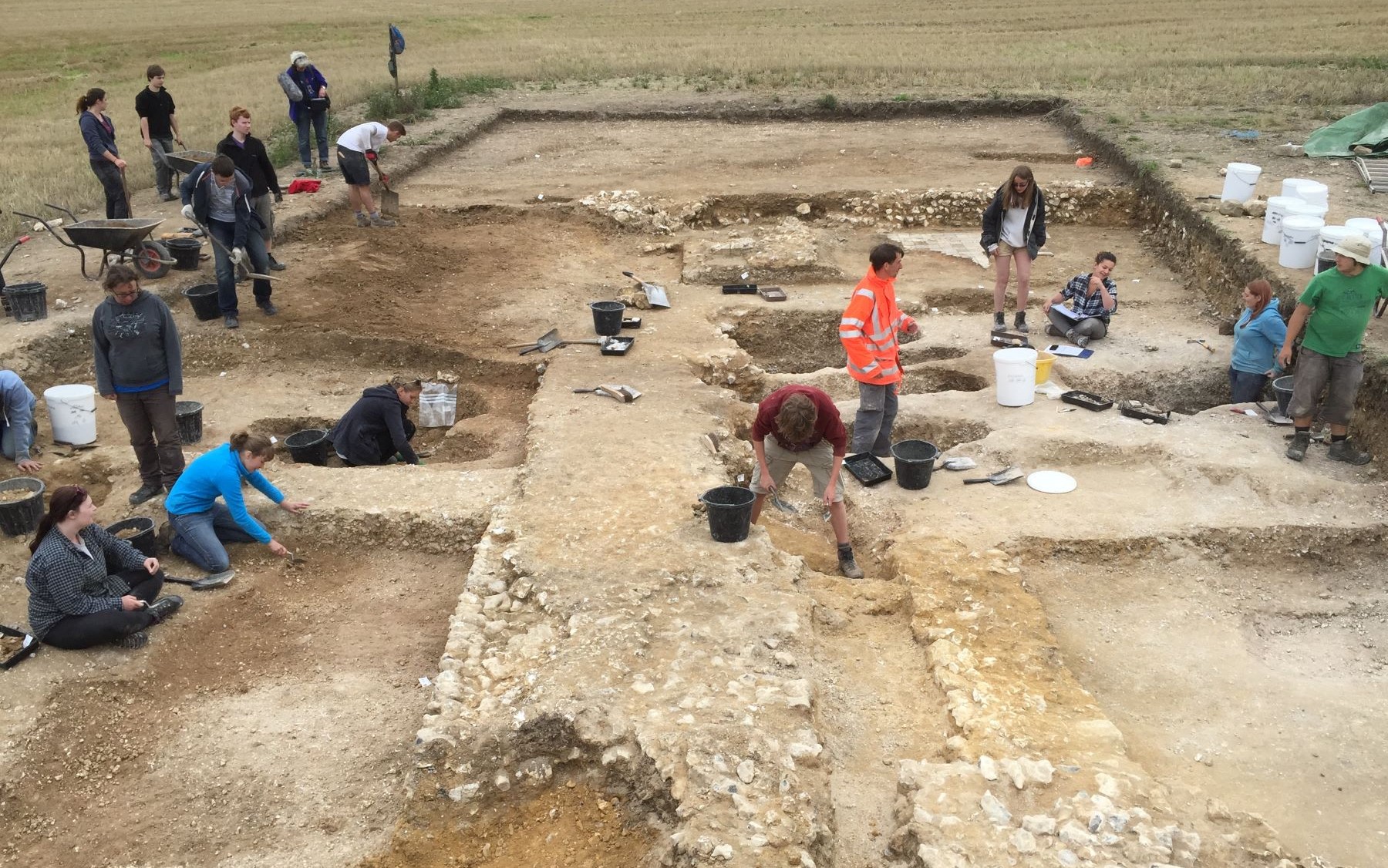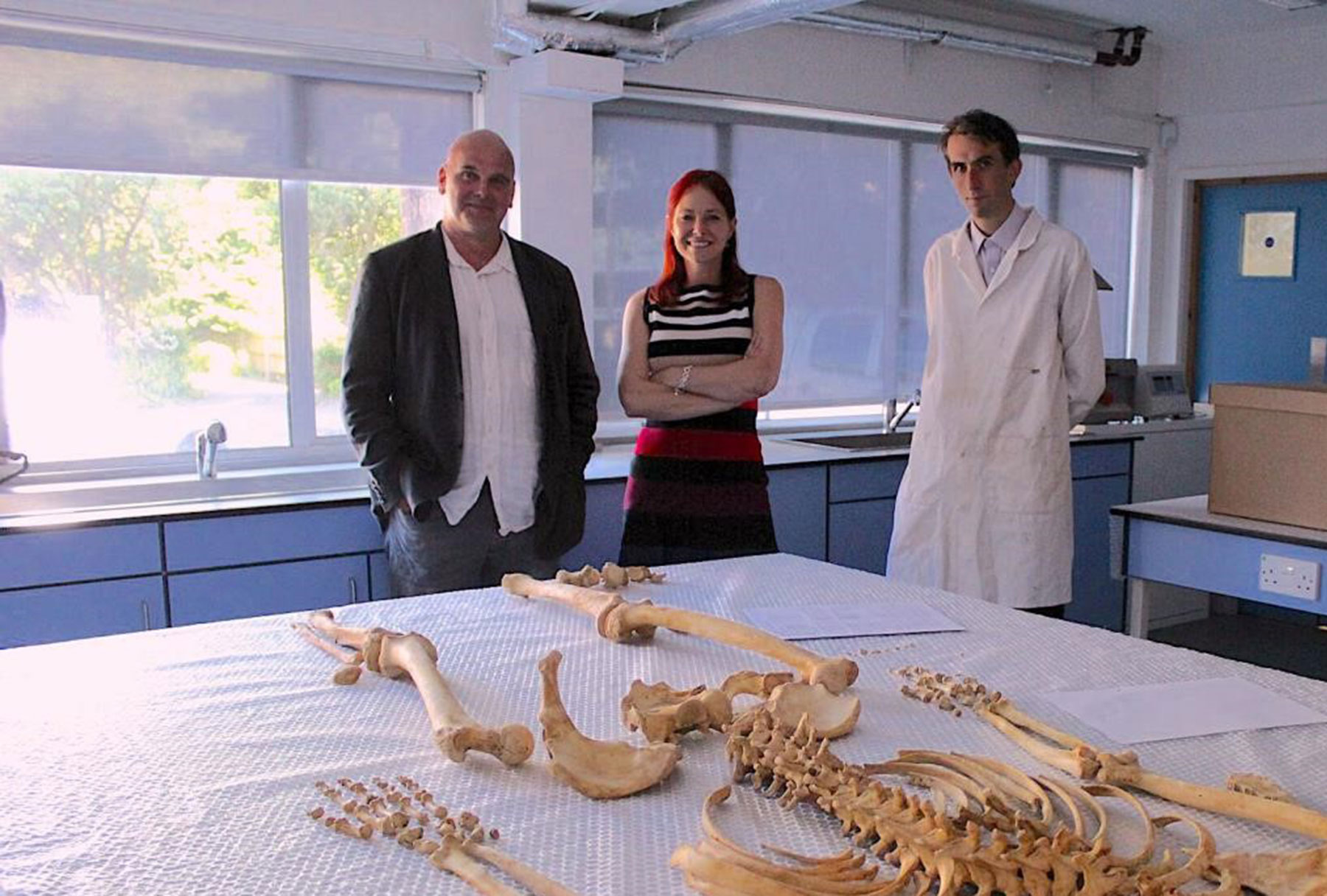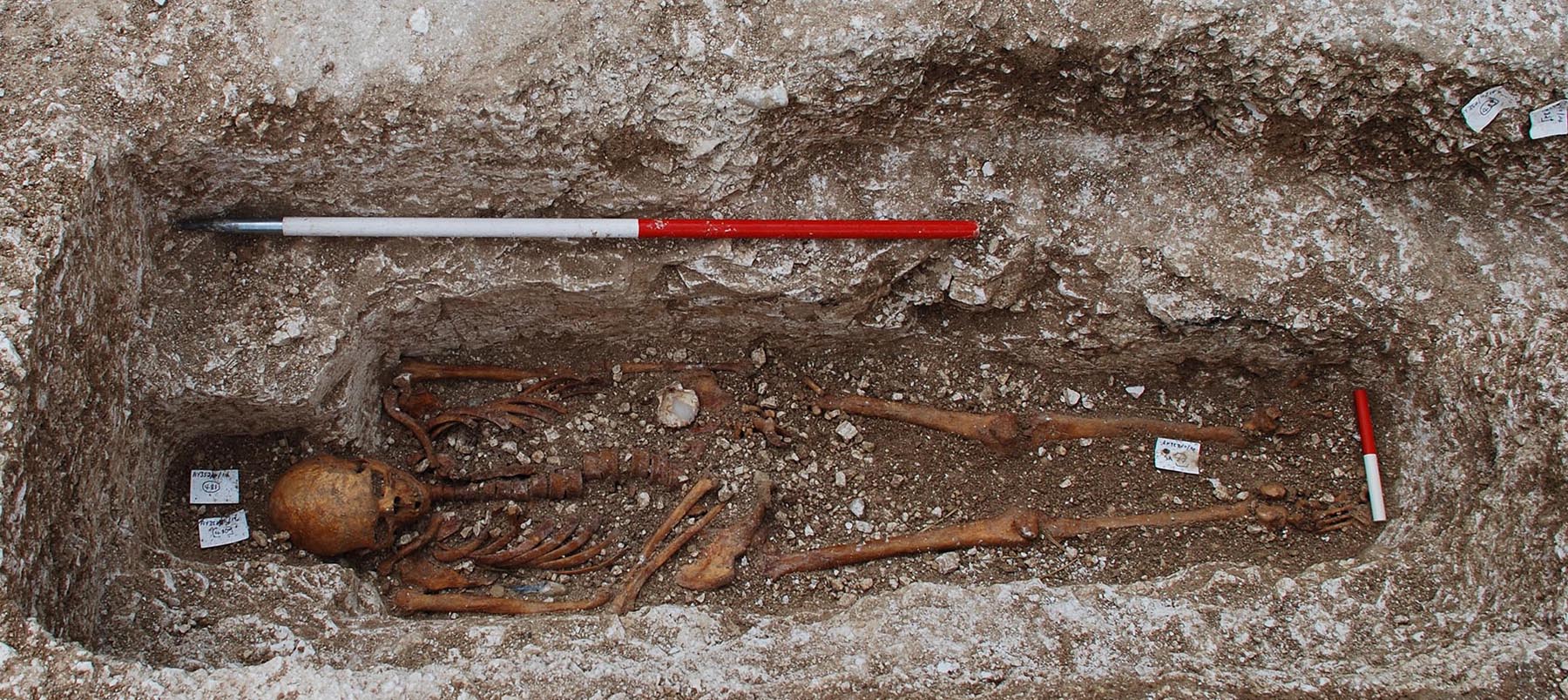
An investigation by University of Winchester archaeologists into a medieval leprosy hospital features in a new book by the TV presenter Professor Alice Roberts.
Alice devotes a chapter to the project led Dr Simon Roffey and Dr Phil Marter at Magdalen Hill on the outskirts of Winchester in her new book Crypt: Life, Death and Disease in the Middle Ages and Beyond.
The book acknowledges Simon and Phil’s work has helped archaeologists and historians rethink how they view the treatment of leprosy in the Middle Ages.
Magdalen Hill has had many uses, notably as 17th century prison of war camp and as a transit camp in the First World War. However, for at least 400 years from the late 11th century the hill had been home to a leprosarium (leprosy hospital).
 Author and broadcaster Alice Roberts on a visit to the University of Winchester to view the remains found at Magdalen Hill. She is flanked here by Simon Roffey, and Dr David Ashby, Laboratory Manager
Author and broadcaster Alice Roberts on a visit to the University of Winchester to view the remains found at Magdalen Hill. She is flanked here by Simon Roffey, and Dr David Ashby, Laboratory Manager
In 2000 the site had been the focus of small, rain-hit excavation for the Channel 4 programme Time Team which uncovered four graves and found geophysical evidence for walls and buildings.
Seven years later Simon and Phil re-examined Time Team’s findings and, with the help of historic documents, began to put together a picture of what the hospital may have looked like.
This formed the basis for a long-term archaeological project. Excavations on the site of the medieval hospital began in 2008 and formed the context for the training of archaeology undergraduate students at the University in excavation and recording.
Over the next seven years the excavations revealed evidence for more than 100 burials as well as a chapel, infirmary and almshouses.
Dating of the burials and associated artefacts on the site revealed that the hospital was the earliest scientifically dated hospital in the country and it became one of the most comprehensively excavated leprosy hospitals in Europe.

Remains of leprosy sufferer in their grave
The remains seem to have been buried with care and dignity which would seem to go against the belief that leprosy sufferers were treated as unclean outcasts.
Consequently, Simon and Phil’s research has suggested the leprosariums may not have been mere isolation camps for the sick but, instead, were religious communities, much like monasteries, founded to care for their patients, many of whom would have survived and lived at Magdalen Hill in relative comfort.
The hospital excavations are one component of the University’s Magdalen Hill Archaeological Research Project investigating the eastern environs of Winchester. This year the excavations will focus on the remains of an extensive First World War military camp.
Simon Roffey said: “It was pleasure to be featured in Alice’s new book. Alice has always taken a great interest in our work at Magdalen Hill and we have featured previously on three of her programmes including Digging for Britain and Winchester: Britain’s Most Norman Town. The excavations have also featured on the BBC One Show, The Grave Trade and national and international news."
Crypt: Life, Death and Disease in the Middle Ages and Beyond is published by Simon and Schuster on February 29.
Listen to Simon Roffey talking about the Magdalen Hill project on the History Hit podcast here
Back to media centre